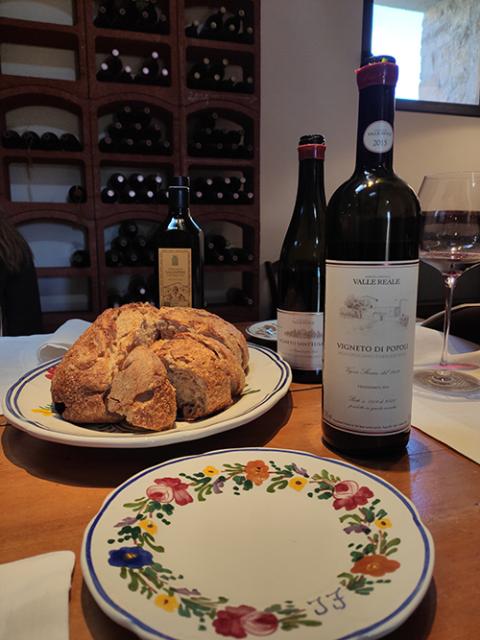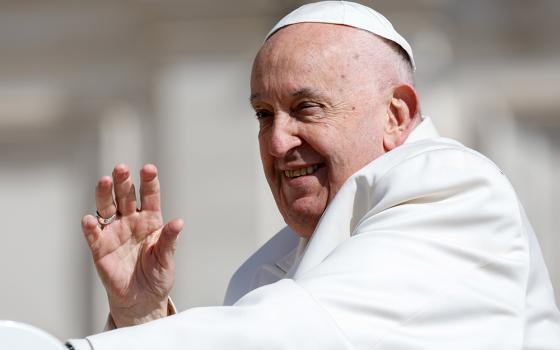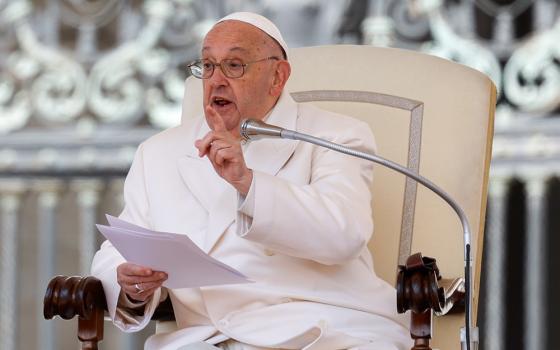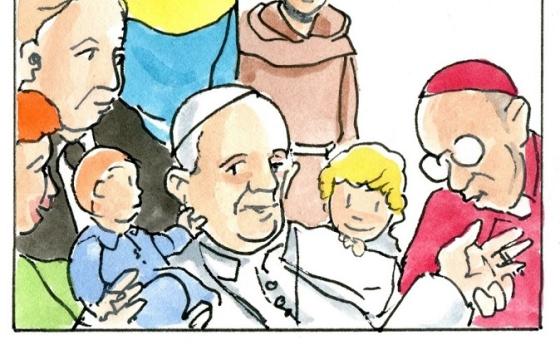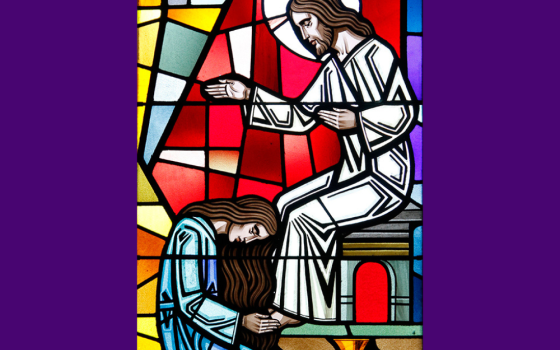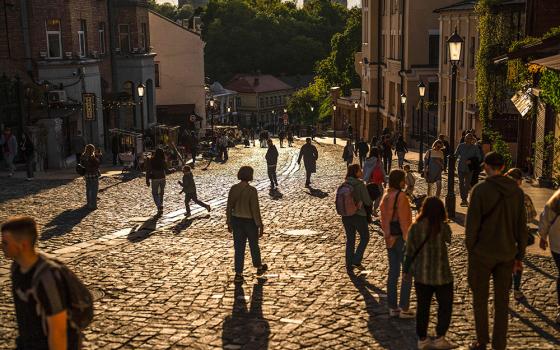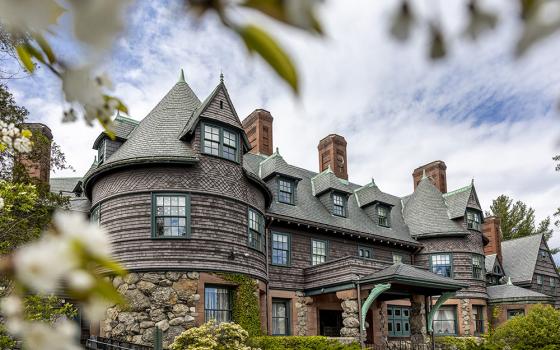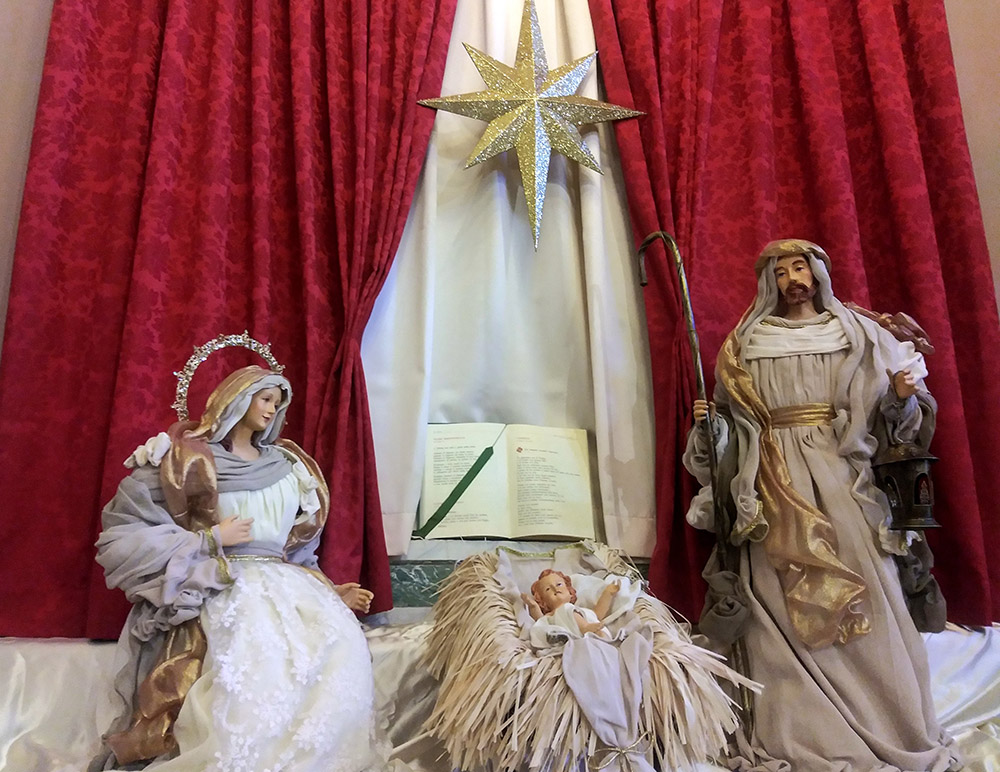
An elaborate crèche decorates each of the Catholic churches in Italy, even in small towns like Guardiagrele in the Abruzzo region, where there are nine churches within the town center. (Judith Valente)
One of the most delightful times anyone can visit Italy is during the holiday season. In the U.S., the Christmas season begins pretty much the day after Halloween. In Italy, it arrives in a much more concentrated package, meant to be savored like a fine Chianti.
I have been to Italy twice for Christmas. The first time was in 1999 as a tourist in Rome, anticipating the new millennium. On subsequent visits, my Italian friends encouraged me to return another time to truly experience Christmas as Italian families do. My husband and I arrived in early December 2021 and settled in the small town of Guardiagrele, burrowed between the Apennine mountains and the Adriatic Sea in south-central Italy.
The season of Natale begins in earnest on Dec. 8 with the feast of the Immaculate Conception, celebrating the Virgin Mary's conception without original sin. In a kind of shorthand, Italians refer to the day as L'Immacolata. Most families wait until then to decorate their Christmas tree.
We were invited for the day to the home of our friends Giovanna and Pierino. Giovanna prepared what is a traditional midday meal for L'Immacolata, consisting of a first course of brodo (broth with egg noodles), a second course of sausage and polenta swimming in a red sauce, followed by stewed meat with potatoes and carrots.
The holidays in Italy are not so much an excuse to shop until you drop as they are a time for religious rituals and family traditions. Gift items such as clothing and crafts adorn shop windows, but most prevalent among them are foods for the common table.
When I asked a merchant for gift ideas for my friends, she directed me to a table filled with panettone, pandoro, calcionetti and torrone — breads, cookies and sweets typically consumed in the Christmas season. The emphasis is less on things to accumulate than items one can share at the table. It's an apt reminder of what Advent and Christmas are about, God with us at the common table.
Like beads on a rosary, Italians tack on other days leading up Christmas for celebration. The feast of Santa Lucia (St. Lucy) falls on Dec. 13 and commemorates the saint whose eyes were gouged out when she refused to renounce her Christian faith. Lucy's name comes from the Italian word luce, for light. On this day, Italians email each other pictures of the fourth century martyr, often accompanied by prayers asking her to intercede for good health, a more loving heart and an abundance of light.
Outdoor lights begin to appear, but they are hardly the bright extravaganzas common in the states. You might see a single string of bulbs draped across a balcony. One reason is that electricity is quite expensive in Italy. Another is an Italian aesthetic sense that doesn't equate excess with elegance.
That said, the municipal Christmas tree in Guardiagrele's town square would rival any public holiday tree in the U.S. It stands about 40 feet tall, decorated with multicolored woolen designs hand-crocheted by local women.
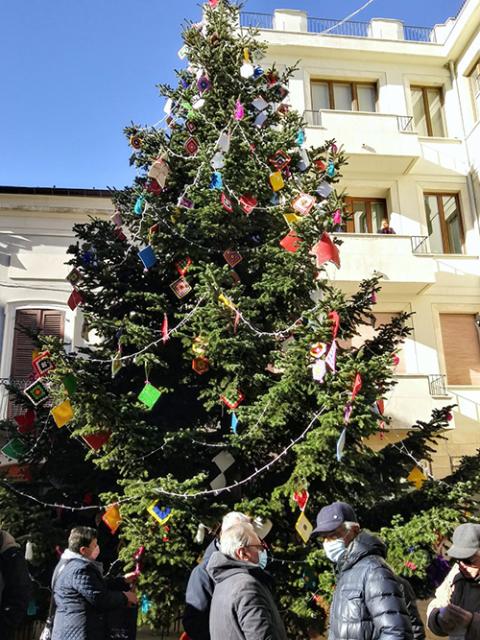
The municipal Christmas tree in the main plaza of Guardiagrele, Italy, is decorated with ornaments in the shape of diamonds and squares crocheted by women in the town. (Judith Valente)
During the first weeks of December, strands of white lights hung vertically from the municipal tree. Some residents in the town complained the lights looked unattractive strung that way. Eventually, workmen on mechanical cranes arrived and draped a set of gold lights around the tree, this time horizontally. Folks seemed pleased.
On Dec. 16, a community novena — nine days of special prayers — begins in the churches. When I attended, three teenage boys from one of the local public schools led the prayers on the novena's first night. A special blessing for younger children takes place at the Mass on the Fourth Sunday of Advent.
After all of these celebrations, Italians are finally ready for La Vigilia di Natale, Christmas Eve. On La Vigilia, families abstain from eating meat and prepare meals of fish, vegetables and cheese.
It would be wrong to characterize this meal as a kind of fast in preparation for Christmas Day. It is more of a feast. The menu might include plates of stuffed mussels, salted cod with roasted pepper, fried cheese balls, linguini with clam sauce or else tagliatelle (a wider pasta noodle) with shrimp. Forgoing meat is more of a symbolic sacrifice than a real one. This, after all, is Italy, where it is a venial sin not to eat well, with or without meat.
When I worked full-time as a journalist, some members of the newsroom staff always had to work on Christmas Eve and Christmas Day. As a young reporter, I often ended up with the short end of that stick. In most Italian towns, all but essential work shuts down during the week between Christmas and New Year's so folks can travel to be with family and friends. For many, the week after Christmas is also a time off work.
Advertisement
The season formally ends on Jan. 6, with the feast of the Epiphany commemorating the arrival of three Magi or "wise men" from the East who come bearing gifts for the infant Jesus. Epiphany is another national holiday, a time to stay home, take down the tree, and enjoy a final, big family meal before folks return to their usual routine.
On that day, children await gifts of candy and other sweets from La Befana, the benevolent witch who is a female version of Santa Claus. According to legend, the Magi asked La Befana for directions leading to the Christ Child. She refused to help them. Soon after, she regretted her decision and set off to find the infant and bring him her own gifts, an assortment of sweets she had baked. She never located him, so each year she must fly around at Christmastime, looking through windows, leaving gifts for children in case one of them happens to be Jesus.
By the time Epiphany rolls around, most Americans already will have been back at work for a week or more. The slow-paced days between New Year's and Epiphany give Italians a chance to relax, recharge and take another small taste of la dolce vita before forging into a new year.
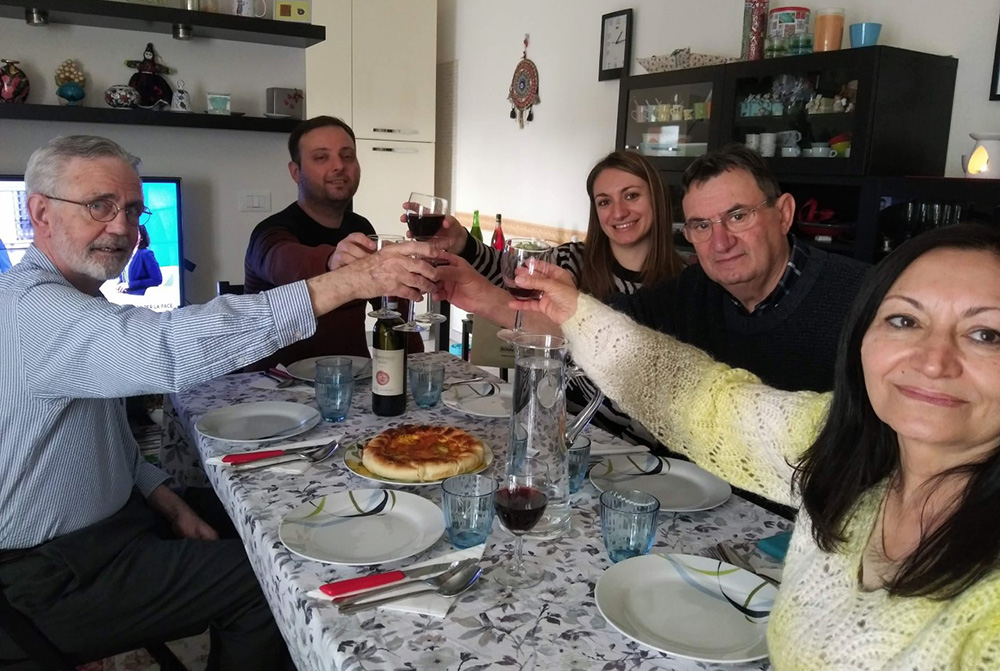
Italians receive the week off between Christmas Eve and New Year's Day to be able to visit with family and friends. The feast of the Epiphany on Jan. 6 is also a national holiday. (Judith Valente)
My Christmas season with Italian friends turned out to be one of the most meaningful I have experienced. I didn't once shop in a crowded mall or department store but spent that time and energy cooking and sharing meals with others or selecting assortments of cheeses, meats and sweets for gift baskets for my friends.
Each saint's day in December felt like a stop on a pilgrimage on the road to Christmas Day. The nine days of special prayers that began on Dec. 16 filled me with anticipation for when Christmas Day arrived.
I try to replicate the traditions of an Italian Natale each year now in my own home, or wherever I find myself during this sacred season. I hope you will, too.





